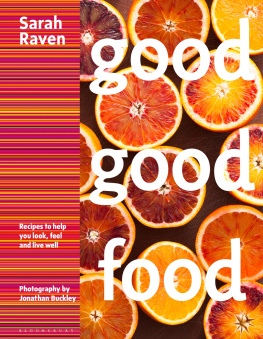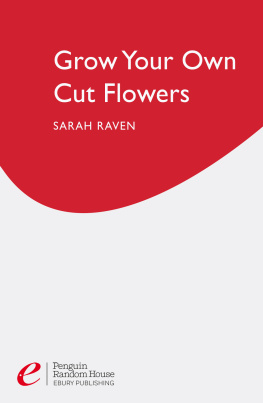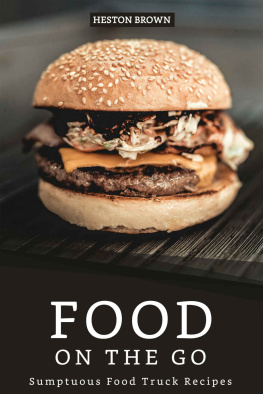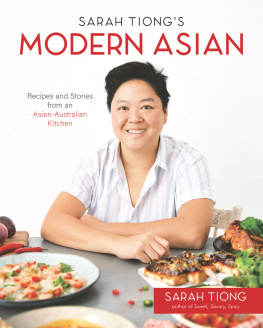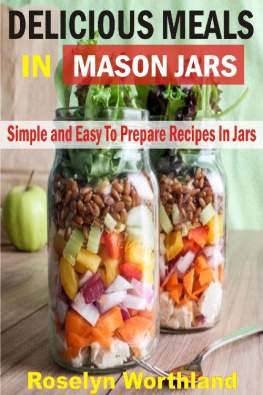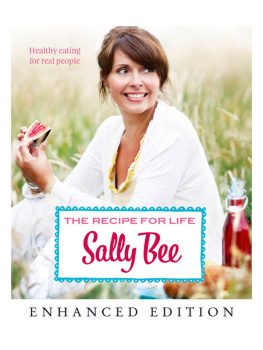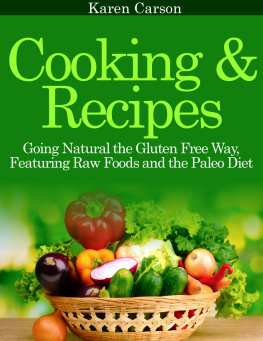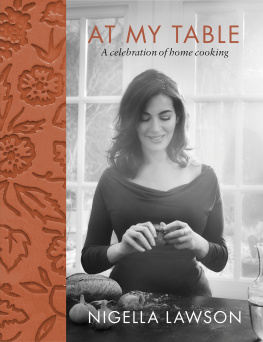
For Jonathan Buckley
In gratitude for all the happy times and beautiful pictures


Introduction
I want every dish I eat to look good, be good to eat and do me good. If you go about it the right way, you can eat wonderful food which also has a positive effect on your health, and makes you live longer and feel better.
With our greater life expectancy these days, its more important than ever that we keep ourselves in good shape physically (as well as mentally), both through exercise, and eating sensibly and well. But sensible or healthy dishes can often be too earnest, and either feel heavy or too much like rabbit food. The challenge I set myself when writing this book was for every recipe to be truly tempting and colourful, but also one that Id be happy to eat regularly, without feeling the hair-shirt was on. That way each recipe would be likely to enter the everyday food repertoire and that has to be the aim.
In my early years here in Sussex, until 1996, I was a medical doctor. When I was not on the wards, I was a doctor who cooked I have been passionate about cooking since I was a teenager and I became increasingly fascinated by the amount of evidence showing how health is utterly entwined with diet. My cooking began to reflect these ideas. I moved away from processed to whole grains and, even in winter, ate more salads, used only the best cold-pressed oils, cooked and ate more soups, and decreased my reliance on dairy. So, as you can appreciate, the book youre holding is one thats been at the back of my mind for a long time.
And, for more than 20 years now, Ive grown my own food at Perch Hill, and everything Ive cooked has revolved around the wonderful things the garden has given me. Fruit and veg have become even more the centrepiece of what I eat and they are also at the heart of the recipes in this book. If you grow your own foods, whether in the garden or allotment, you can ensure that they are grown organically, without being sprayed with insecticides or chemical fertilisers, and you can pick them when they are at their seasonal peak. If you arent fortunate enough to be able to grow your own, choose your fruit and veg carefully: try to buy seasonally (when everything is at its best), locally (so it is very fresh) and organic. You must be aware of the provenance of the food you are eating its central to Good Good Food.
Another insight into the intimate relationship between health and diet came about through my visits to Crete, where I became gripped by statistics about Cretan longevity. Cretans live substantially longer than the rest of us, and significantly longer even than Greeks on the mainland only a few miles away. Many people from places and communities similarly renowned for their longevity such as Sardinia, the Okinawa Islands of Japan and the south coast of Nova Scotia live to be around 100 years old. And when I say live, I mean that they live very long lives, in a healthy, integrated and active way. They may be old, but they are not crippled by the illnesses and afflictions of our elderly population: dementia, depression, disabling cardiovascular disease or cancer. Such diseases are rare in these communities, and there are several reasons why this is so. One is that, on the whole, they are more physically active, but its also important that in their traditional diet they tend not to eat processed foods; nor do they over-eat, as we tend to do in more industrialised countries; and they have a lifestyle in which they eat sociably, with food and meals bringing people together. It is very difficult to quantify, but I believe this is a major factor in eating for health and longevity.
Healthy eating is a vast subject, made ever more complicated by the increasing problem of obesity in western cultures. There is so much information drip-fed to us through newspapers and television, books and social media, that its hard to know what we should believe and which path to follow. The ideas on the following pages and throughout this book should help you re-think your ways of buying, cooking and eating. But do remember, none of this is meant to be a punishment. Its a way of enhancing your life, not diminishing it. A lot of it is fun, and many of the recipes bring smiles to the faces of the people who are eating them.
So lets get started. Its time to begin a new campaign to make tasty food which is positively good for you too. Take it at your own pace none of us can change the habits of a lifetime overnight but whether its a midweek supper or a weekend lunch, aim to make something that is simply Good Good Food.
Sarah Raven
November 2015
Eat yourself healthy
The world we live in has been transformed in the last century or so. We have seen massive dietary and lifestyle changes in a relatively short time, changes that have come about much faster than our genetic make-up. Environmental and personal stresses have increased exponentially, and our bodies can no longer cope.
These changes are particularly true in the food we eat. Many of us have been pushed towards sweet, nutrient-sparse, but calorie-dense, fatty foods, leaving us over-fed, but counter-intuitively undernourished. Our bodies are increasingly intoxicated by the vast array of chemicals we are presented with on a daily basis; theyre stressed from fluctuating blood-sugar levels, due largely to the excess of refined food, caffeine and alcohol many of us consume; and theyre in a state of chronic inflammation, setting us on the road to almost inevitable ill health.
We may be living longer, but thats not because were looking after ourselves better. Its largely down to improvements in medical care and sanitation. We are dying of different things from our great-grandparents and even our grandparents. At the beginning of the twentieth century, over 60 per cent of deaths were due to infectious and transmissible diseases. Now, in the early twenty-first century, more than 60 per cent are due to chronic diseases such as Alzheimers, atherosclerosis (clogging of the arteries), type 2 diabetes, cancer, cardiovascular disease, stroke and obesity-related conditions. Theyre our killers, and we are actively encouraging them with our diet and lifestyle choices.
It used to be thought that some inevitable biological clock was ticking thats what made us old but it is now understood that ageing can be due to the cumulative damage done to our bodies at a cellular level and the increasing inability of our cells to respond to lifestyle, diet and environmental challenges that can lead to disease. So if we can find ways of reducing the rate of damage, or increasing the effectiveness of repair mechanisms, we might be able to delay the onset of disease and have a healthier, fitter old age.
This book is about exactly that: first choosing the best, non-faddy superfoods that can really make a difference to your health, including many that we ought to be eating day to day; and then offering you my best ideas on how to eat them. Ive highlighted over 100 healthy ingredients here, and have included for each of them a mini food biography. Gathering information from nutritionists, medical journals and research centres, such as The Institute of Food Research (IFR) and the John Innes Centre, these outline the latest evidence on the healthiness of all these special foods, with technical terms in bold type explained in the glossary. There are some 250 recipes which feature these wholesome ingredients, nearly all of which signal their goodness through bright colours and strong flavours, dimensions of the healthy elements they contain.
Next page
